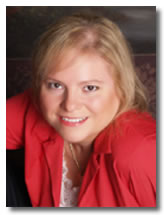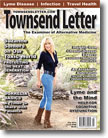Page 1, 2
Diagnosis of Lyme Disease
There is a lot of controversy on how to diagnose Lyme. The testing methods available are less than ideal, with low sensitivity levels. The standard of care has a two-tier serological test. First tier screening is performed by an ELISA, which should be done in all suspected patients who believe that they had a possible exposure 3 to 4 weeks prior. This is when Lyme-specific IGM serology is also detectable, followed months later by a Lyme-specific IGG response. The ELISA test has a low sensitivity, and therefore many physicians will check western blot. A study published in the British Medical Journal found that the overall sensitivity of the combined ELISA/western blot was only 56%.15 The issues with western blot do occur with the strain that the lab uses, as there are multiple strains of Borrelia present in the US and over 300 strains worldwide. Borrelia-specific bands reflect outer surface proteins on the surface of the organism that are seen more often in Lyme disease than in other infections. These bands include 23kDa (outer surface protein C [OspC]), 31kDa (OspA), 34kDa (OspB), 39kDa, and 83-93kDa. It is thought that if any of these bands are present on western blot, there is a high likelihood that the patient may have been exposed to Lyme. The most commonly used strain for testing is the B31 strain; however, some think that the 297 strain is more reliable. There is also PCR (polymerase chain reaction) testing, a DNA test with the limitation that it may require multiple samples over time.16,17 Most believe that Lyme is a clinical diagnosis, and that lab results serve to support the clinical diagnosis. There are the supporting tests such as complement 3A and 4A levels, and CD 57 counts. Complement split products are reportedly elevated in patients with acute Lyme disease. A study by Ray Stricker showed that patients with predominantly musculoskeletal symptoms of Lyme disease had significantly increased levels of C4a compared with controls. The study also showed that response to treatment with antibiotics was associated with a significant reduction in C4a levels. 18 Another study showed that patients with chronic Lyme disease had decreased levels of CD 57 lymphocytes over 10 years. This study concluded that chronic Lyme disease is associated with a persistent immunologic defect that prevents the infection from being cleared by the immune system.19 CD 57 is a marker of nature killer cell differentiation and has been most widely explored as a marker of replicative senescence on T cells.20 CD 57 is still not fully known and is not recommended for use by the CDC; however, many physicians who treat Lyme every day use the CD 57 count to monitor treatment. On the horizon in phase II trials is nanotrap technology. This will have a high sensitivity of over 90% and specificity. This test employs nanotrap particles to concentrate urinary OspA and use a high specific anti-OspA monoclonal antibody as a detector of the C-terminus peptides.21
Treatment Options for Lyme
There are a lot of theories of how to treat Lyme disease. Everyone agrees that for the acute case, treat with antibiotics for 2 to 4 weeks. But for chronic Lyme there is a lot of disagreement. Accepted therapy is long-term antibiotics, but do you use one or three to four? Do you use an intracellular antibiotic, a cyst buster, or an outer membrane antibiotic? The International Lyme and Associated Diseases Society (ILADS) recommends antibiotic therapy – although some physicians are advocating higher doses and combination therapies. It is recommended to start prophylaxis treatment for a black-legged tick bite. Treatment options for an EM rash include 20 days of azithromycin, cefuroxime, doxycycline or amoxicillin. Long-term treatment is sometimes required for patients with chronic Lyme. It is thought that Lyme spirochetes can penetrate into the bone marrow and this is one of the factors that make it difficult to kill.22 A study done by Dr. Christa Muller-Sieberg found that some stem cells lived as little as 5 months and others lived longer than 3 years. If this is true and Lyme can penetrate stem cells, this may account for some of the relapses with shorter treatment.
View a table of antibiotic treatment options. .pdf
Alternative Therapies for Lyme
Many patients are against prolonged antibiotic usage – so what are their alternatives? There are several immune-supportive herbal medications such as cordyceps and reishi – although these are not curative. Byron White has several preparations for Lyme and the coinfections. These are herbal tinctures that are very potent and need to be used with a trained practitioner and in small doses. Ozone therapy has been shown to be beneficial, as it increases the immune response. Ozone has also been shown to kill bacteria and viruses on contact, and it prevents viruses from adhering to the cell wall.
The most effective alternative treatment that we have found is IV silver hydrosol with Argentyn 23. Silver is well known to be a broad-spectrum antimicrobial agent, but it has also been reported that it has antiviral, anti-inflammatory, and antibiofilm activities and enhances wound healing.23 Some studies suggest that the particle size, shape, surface charge, surface coating, solution chemistry, and solubility affect silver's toxicity.24 Silver is considered virostatic – stopping the replication of the virus on contact.25 Silver is processed by the liver, and the cofactor in the liver for silver elimination is selenium dependent. Therefore, it is suggested to make sure that the patient is taking selenium while taking silver.26 When using silver, we usually start with oral doses to clear the spirochete and the stealth form (L-form). We use only 23 ppm silver hydrosol as an IV drip at a slow rate. In our practice, using silver in high doses has been very effective in not only having our patients symptom free but also their labs indicating that they are infection free. Our longest-term patient thus far has been symptom free for 4 years.
Notes .pdf
 Dr. Tracie Leonhardt graduated from Southeastern University (now known as Nova University) in 1992, completed her internship at Suncoast Hospital in Largo, and completed her residency in emergency medicine at Midwestern University in Chicago, Illinois, in 1996. Dr. Leonhardt began her 14-year tenure in emergency medicine at Northside Hospital in St. Petersburg, Florida, in 1996, where she earned the titles of associate medical director of the Emergency Department, chairperson of the Emergency Department, and then medical director of the Emergency Department. During her tenure in the Emergency Department, Dr. Leonhardt also worked with medical control for over 10 years as an online medical control physician, in which she worked closely with our first responders in the field while enhancing their education. Dr. Leonhardt was honored to present a lecture to the American Osteopathic Society in New Orleans in 2010 on the subject of type 2 diabetes. Dr. Tracie Leonhardt graduated from Southeastern University (now known as Nova University) in 1992, completed her internship at Suncoast Hospital in Largo, and completed her residency in emergency medicine at Midwestern University in Chicago, Illinois, in 1996. Dr. Leonhardt began her 14-year tenure in emergency medicine at Northside Hospital in St. Petersburg, Florida, in 1996, where she earned the titles of associate medical director of the Emergency Department, chairperson of the Emergency Department, and then medical director of the Emergency Department. During her tenure in the Emergency Department, Dr. Leonhardt also worked with medical control for over 10 years as an online medical control physician, in which she worked closely with our first responders in the field while enhancing their education. Dr. Leonhardt was honored to present a lecture to the American Osteopathic Society in New Orleans in 2010 on the subject of type 2 diabetes.
In 2003, Dr. Leonhardt was diagnosed with type 2 diabetes and went on a quest to improve her health. Despite optimal medical treatment for her diabetes, she worsened in her disease process, leading to 7 different medications, including high-dose insulin. Unhappy with the traditional standard of care, she started the search for new innovative methods of treatment. This journey led her to study bariatric medicine (weight loss). She proceeded to lose just under 100 pounds and stop taking her medications for diabetes – via diet control. Dr. Leonhardt has since extensively studied the metabolic and hormone systems, which has led her to the discovery that type 2 diabetes can be reversed in certain patients. This has led to her reversal of type 2 diabetes for the past 5 years. Since practicing bariatric medicine for the last 5 years, Dr Leonhardt decided to expand her practice to include the rest of the picture.
Dr. Leonhardt has recently completed her advanced fellowship, passing both the written and oral exams in Anti-Aging and Regenerative Medicine. She is currently enrolled in the master's program at USF medical school in metabolic and nutritional medicine. Dr. Leonhardt, while currently practicing and a leading expert in weight management, is branching out to the entire metabolic and nutritional spectrum of medicine, known as integrative and functional medicine.
Page 1, 2 |
![]()
![]()
![]()





 Dr. Tracie Leonhardt graduated from Southeastern University (now known as Nova University) in 1992, completed her internship at Suncoast Hospital in Largo, and completed her residency in emergency medicine at Midwestern University in Chicago, Illinois, in 1996. Dr. Leonhardt began her 14-year tenure in emergency medicine at Northside Hospital in St. Petersburg, Florida, in 1996, where she earned the titles of associate medical director of the Emergency Department, chairperson of the Emergency Department, and then medical director of the Emergency Department. During her tenure in the Emergency Department, Dr. Leonhardt also worked with medical control for over 10 years as an online medical control physician, in which she worked closely with our first responders in the field while enhancing their education. Dr. Leonhardt was honored to present a lecture to the American Osteopathic Society in New Orleans in 2010 on the subject of type 2 diabetes.
Dr. Tracie Leonhardt graduated from Southeastern University (now known as Nova University) in 1992, completed her internship at Suncoast Hospital in Largo, and completed her residency in emergency medicine at Midwestern University in Chicago, Illinois, in 1996. Dr. Leonhardt began her 14-year tenure in emergency medicine at Northside Hospital in St. Petersburg, Florida, in 1996, where she earned the titles of associate medical director of the Emergency Department, chairperson of the Emergency Department, and then medical director of the Emergency Department. During her tenure in the Emergency Department, Dr. Leonhardt also worked with medical control for over 10 years as an online medical control physician, in which she worked closely with our first responders in the field while enhancing their education. Dr. Leonhardt was honored to present a lecture to the American Osteopathic Society in New Orleans in 2010 on the subject of type 2 diabetes.